A disorganized pantry often feels like a constant battle. You waste precious time searching for ingredients, discover expired food hidden in the back, and routinely overbuy items you already own. This cycle leads to frustration, wasted money, and unnecessary stress in your home. Imagine instead a pantry where everything has a designated spot, visible and easily accessible, supporting your meal preparation and daily routine with seamless efficiency. That vision is not just achievable, it is a practical reality you can build with a thoughtful system.
This comprehensive guide will equip you with the strategies to transform your pantry from chaotic to calm. We will move beyond temporary fixes to establish reliable storage systems, implement smart layouts, and leverage the power of labeling. You will learn how to create a pantry organization system that not only looks fantastic but also functions beautifully for your busy life, ensuring lasting order and peace of mind.
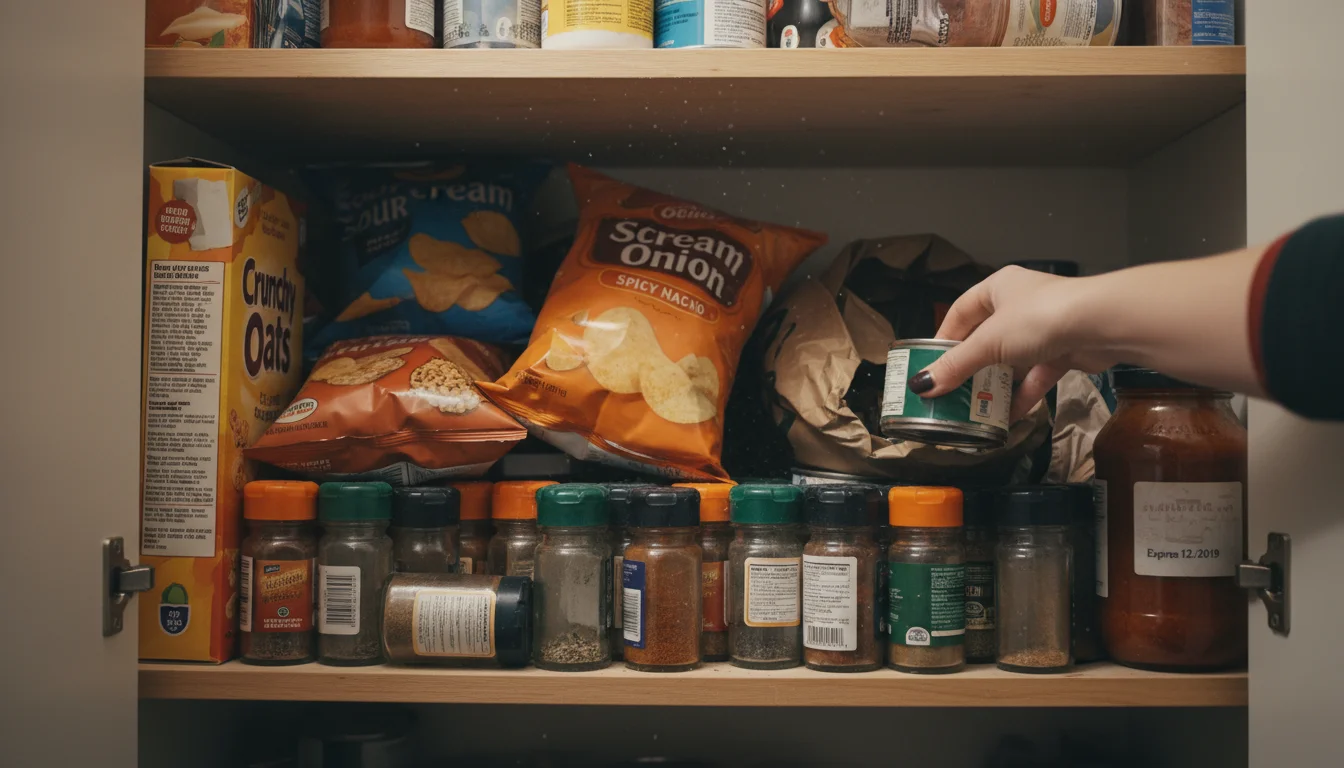
The Pantry Problem: Why Lasting Organization Matters
Your pantry holds more than just food; it stores potential meals, baking projects, and the ingredients for family gatherings. When this space lacks order, it impacts your entire kitchen. A recent survey by the American Cleaning Institute revealed that 89 percent of Americans feel more productive when their home is clean and organized. Imagine that productivity extending to your pantry, where every item has its place.
Poor pantry organization leads to tangible problems. You likely experience food waste due to items expiring unnoticed, leading to financial loss. Many households throw away an average of $1,500 worth of food each year, a significant portion of which stems from disorganization. Beyond the financial aspect, a cluttered pantry creates mental clutter, adding stress to meal preparation and daily chores. You deserve a system that actively supports your life, rather than hindering it.
Implementing effective pantry organization means creating a system where every item is visible, accessible, and properly stored. This saves you money by preventing food waste and impulse purchases. It saves you time during meal prep, as ingredients are quick to locate. Most importantly, it reduces stress and introduces a sense of calm and control into your kitchen, transforming a source of frustration into a functional asset.
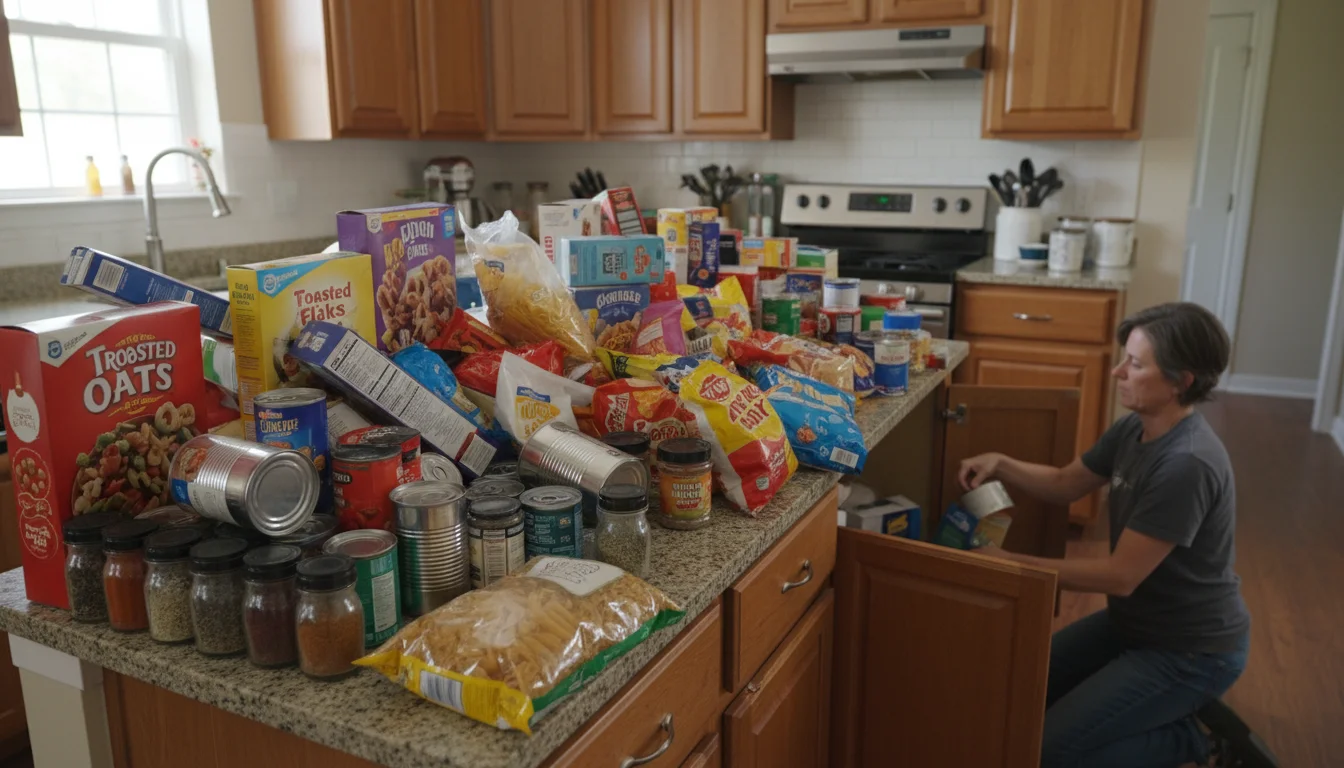
Step One: The Deep Declutter and Inventory
Before you implement any new storage systems or containers, you must start with a clean slate. This decluttering phase is the most critical step in building a lasting pantry organization system. It gives you a clear picture of what you own, what you need, and what you can let go of.
Follow these steps for a thorough declutter:
- Empty Everything Out: Remove every single item from your pantry. Lay everything out on your kitchen counters or a large table. This allows you to see the true volume of your pantry contents and identify duplicates or forgotten items.
- Clean the Space: Wipe down shelves, walls, and the floor of your empty pantry. Address any spills or crumbs. Consider adding shelf liners for easier cleaning in the future.
- Check Expiration Dates: Go through every package and container. Discard anything expired, stale, or no longer safe to eat. Be ruthless in this step; keeping expired food negates the purpose of an organized, efficient pantry.
- Consolidate and Categorize: Group similar items together. All baking supplies in one pile, all snacks in another, pasta with pasta, canned goods with canned goods. Combine nearly empty packages of the same item into one container if possible.
- Identify “Keep,” “Donate,” “Relocate” Piles:
- Keep: Items you regularly use and are still good.
- Donate: Unopened, non-expired items you will not use. Many food banks accept these.
- Relocate: Items that do not belong in the pantry (e.g., cleaning supplies, pet food that should be elsewhere).
- Take Inventory: Make a quick list of what you have, especially staples you use frequently. This inventory informs your grocery shopping and helps prevent overbuying. Understanding your inventory is a core element of effective pantry organization.
This initial purge takes time, but it lays the groundwork for a pantry that genuinely serves your needs. You cannot organize clutter effectively; you must first eliminate it.
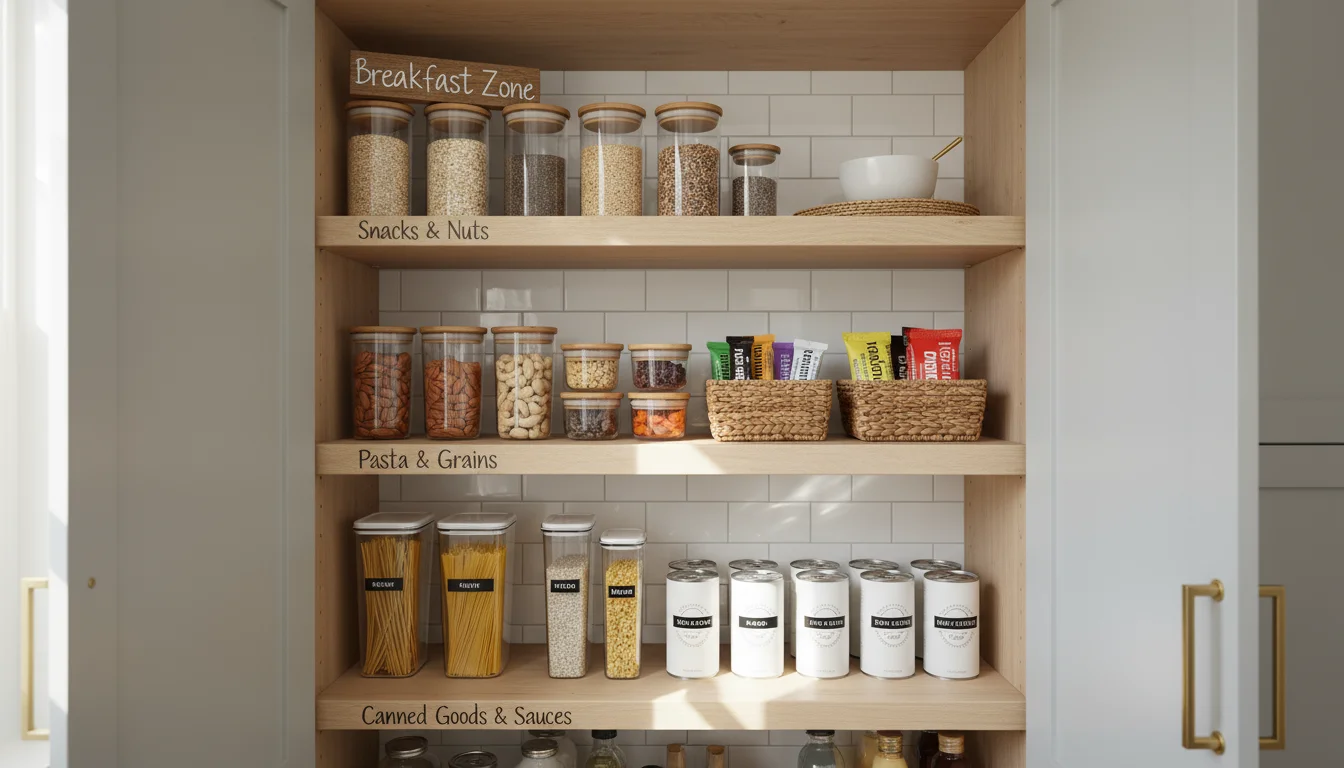
Designing Your Pantry Layout: Creating Functional Zones
Once you know what you own, you can design a layout that makes sense for your cooking habits and household. The key to a functional pantry is creating “zones,” which are designated areas for specific categories of items. This principle applies whether you have a large walk-in pantry, a narrow cabinet pantry, or just a few shelves in your kitchen.
Consider these common pantry zones:
- Baking Zone: Flour, sugar, baking powder, chocolate chips, extracts. Group these for easy access when baking.
- Breakfast Zone: Cereal, oatmeal, granola, coffee, tea.
- Snack Zone: Chips, cookies, granola bars, fruit snacks. Keep these easily accessible for family members, especially children.
- Dinner Staples: Pasta, rice, sauces, canned vegetables, beans.
- Spices and Condiments: Oils, vinegars, hot sauces, various spices.
- “Bulk” or Overflow: Large packages of paper towels, extra cereal boxes, less frequently used appliances.
When designing your layout, think about accessibility and frequency of use:
- Eye-Level Shelves: Reserve these for daily staples and frequently used ingredients. Your most-used items should be the easiest to grab.
- Lower Shelves: Ideal for heavy items like bags of flour or sugar, canned goods, or items for children’s snack access.
- Upper Shelves: Best for overflow, infrequently used items, or seasonal supplies. Consider a step stool for safe access.
Evaluate your pantry type. A deep pantry might benefit from pull-out pantry shelves, while a shallow pantry might rely more on vertical stacking and door organizers. Even a small pantry can utilize zones effectively, perhaps dedicating a shelf to “baking” and another to “snacks.”
This systematic approach ensures that your pantry layout works *for* you. It reduces decision fatigue and makes returning items to their proper place intuitive, which is crucial for maintaining order over time.
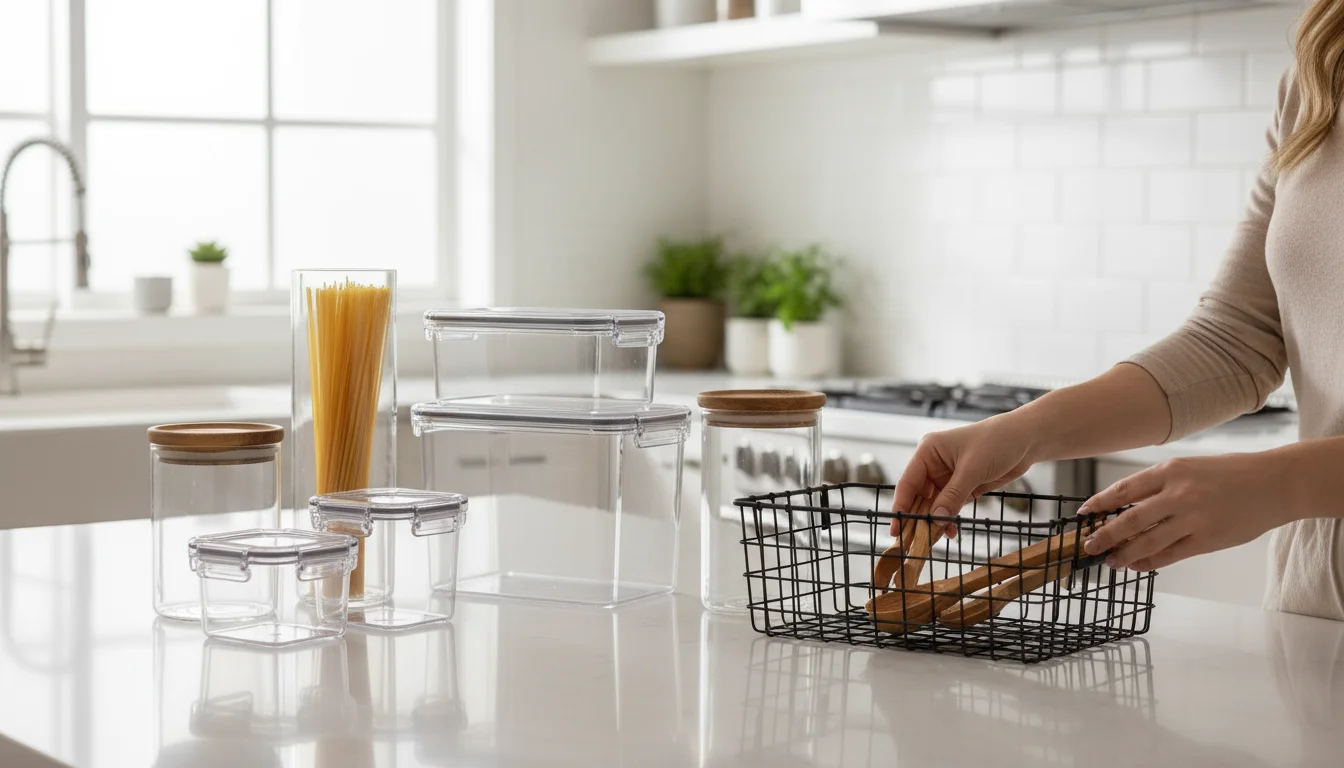
Choosing Smart Storage Systems and Containers
With your pantry decluttered and your zones established, you are ready to select the right storage systems and containers. The goal here is functionality, visibility, and durability, not just aesthetics. While attractive containers are a bonus, their primary purpose is to make your pantry more efficient.
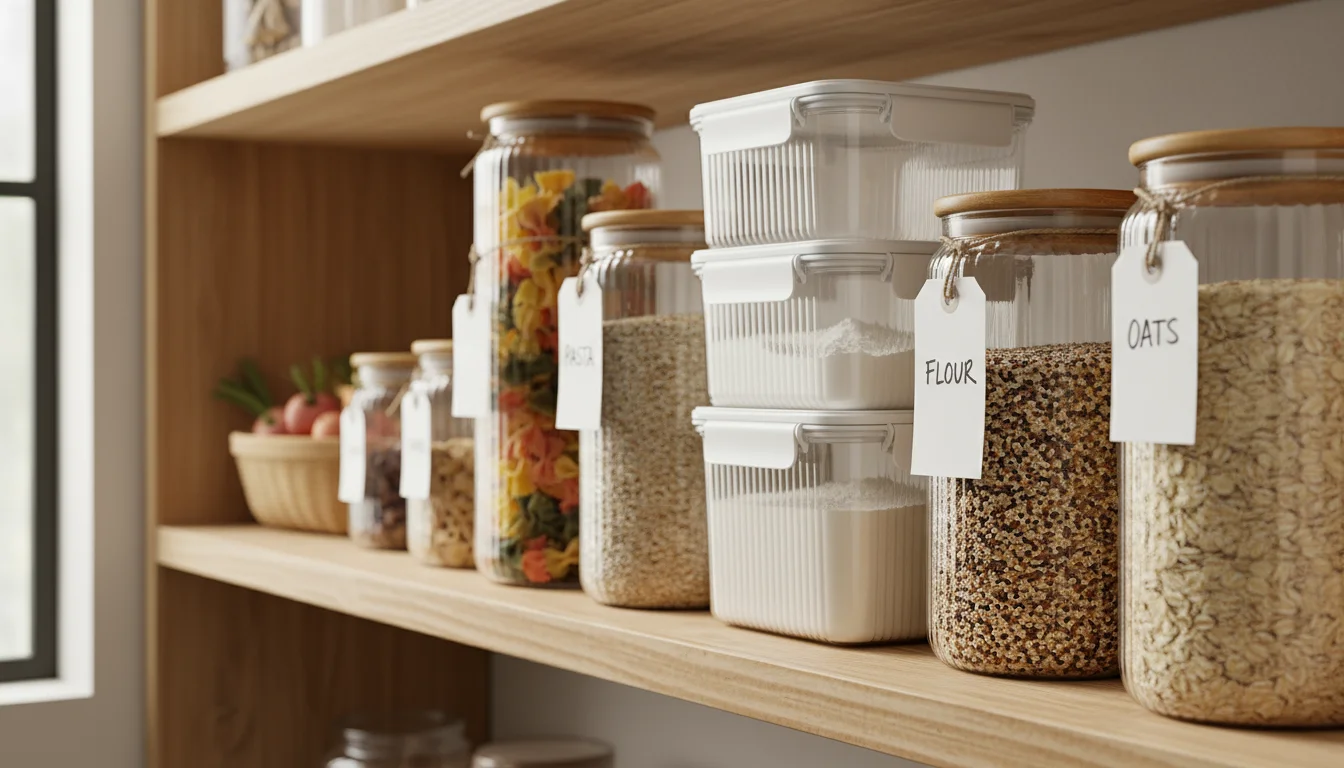
Prioritizing Clear Container Systems
Clear containers are a game-changer for pantry organization. They allow you to see exactly what you have at a glance, eliminating the need to rummage through opaque boxes. This visibility is key to preventing overbuying and knowing when to restock. Look for:
- Airtight Seals: Essential for keeping dry goods like flour, sugar, pasta, rice, and cereals fresh and protected from pests.
- Stackability: Opt for containers with flat lids that stack neatly to maximize vertical space. Uniform container shapes create a cleaner look and optimize space.
- Durable Materials:
- Plastic (BPA-free): Lightweight, shatterproof, often more affordable.
- Glass: Durable, non-porous, excellent for food safety, but heavier and breakable.
- Variety of Sizes: Purchase a range of sizes to accommodate different quantities of food, from small spice jars to large cereal containers.
Before you buy, measure your shelves. Ensure your chosen containers fit comfortably on your shelves with enough clearance to easily remove and replace lids. Buying containers in sets often provides cost savings and promotes a cohesive look, which helps with long-term visual organization.
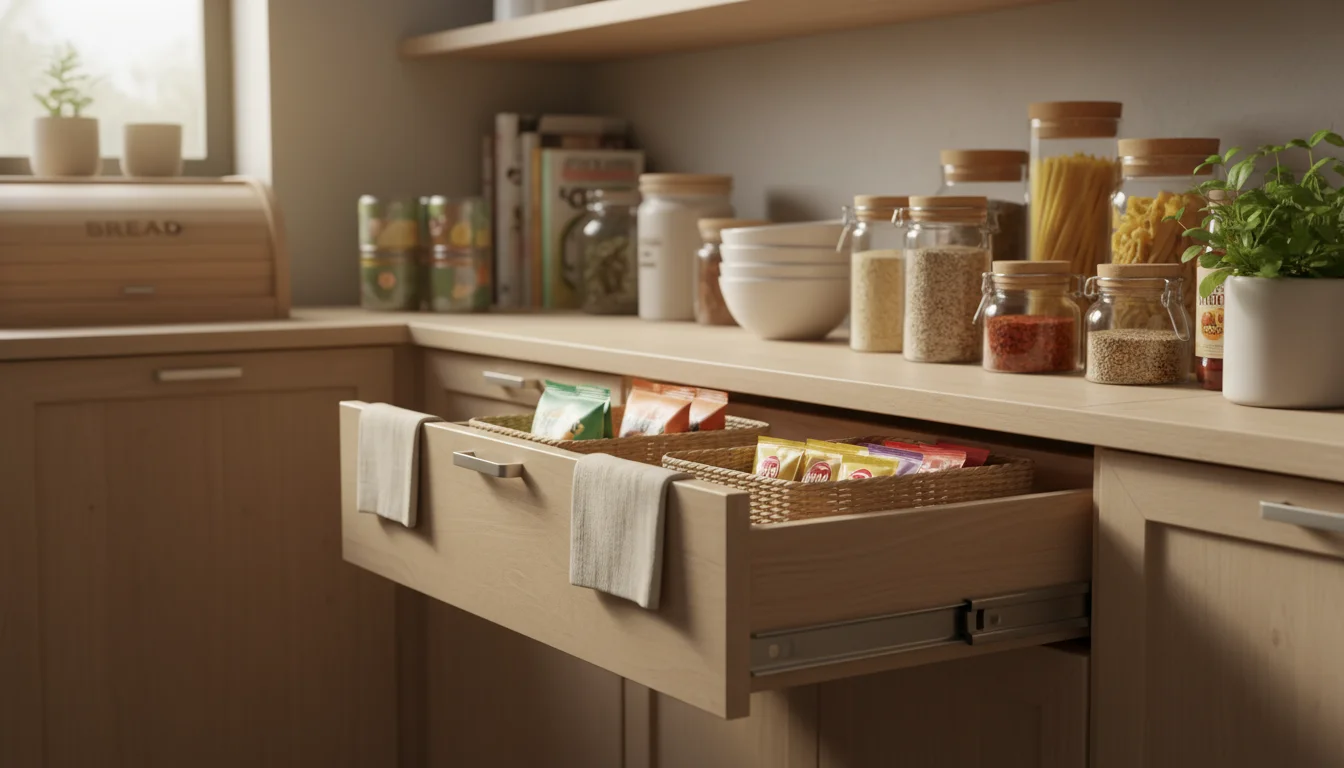
Beyond Clear Containers: Other Essential Storage Systems
- Baskets and Bins: Perfect for corralling oddly shaped items like snack bags, small sauce packets, or cleaning supplies. Choose bins with handles for easy retrieval. Woven baskets add warmth, while plastic bins are easy to clean.
- Turntables (Lazy Susans): Ideal for corners or deep shelves, these allow you to easily access oils, vinegars, condiments, and spices without reaching to the back.
- Tiered Risers: Create levels for canned goods or spices, making every item visible and preventing cans from getting lost behind others.
- Pull-Out Drawers or Baskets: Excellent for deep pantries or base cabinets. They bring contents to you, eliminating wasted space in the back. Installing pull-out pantry shelves can significantly improve accessibility and organization in a deep pantry, allowing you to utilize every inch of space efficiently.
- Door Organizers: Maximize vertical space on pantry doors for spices, foil, plastic wrap, or smaller items.
Remember your budget. You do not need to buy all new containers at once. Start with the most problematic areas or items and build your collection gradually. Many affordable options exist at discount stores or even through DIY solutions using repurposed items.
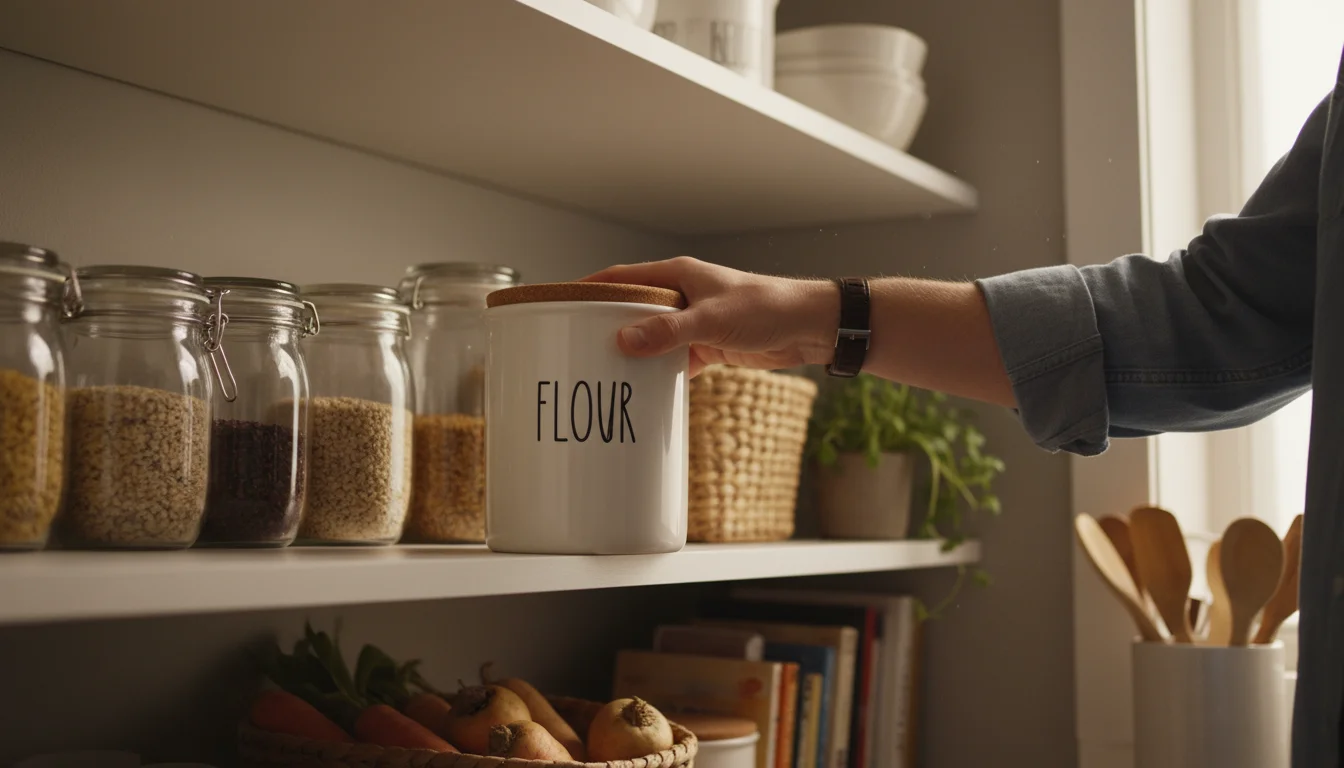
The Power of Labels: Your Memory’s Best Friend
You have decluttered, zoned, and chosen your containers. The final touch that cements your pantry organization system and makes it truly sustainable is labeling. Labels are not just for aesthetics; they are a critical communication tool that ensures everyone in your household understands where things belong and what is inside opaque containers. They are the backbone of a successful pantry organization strategy.
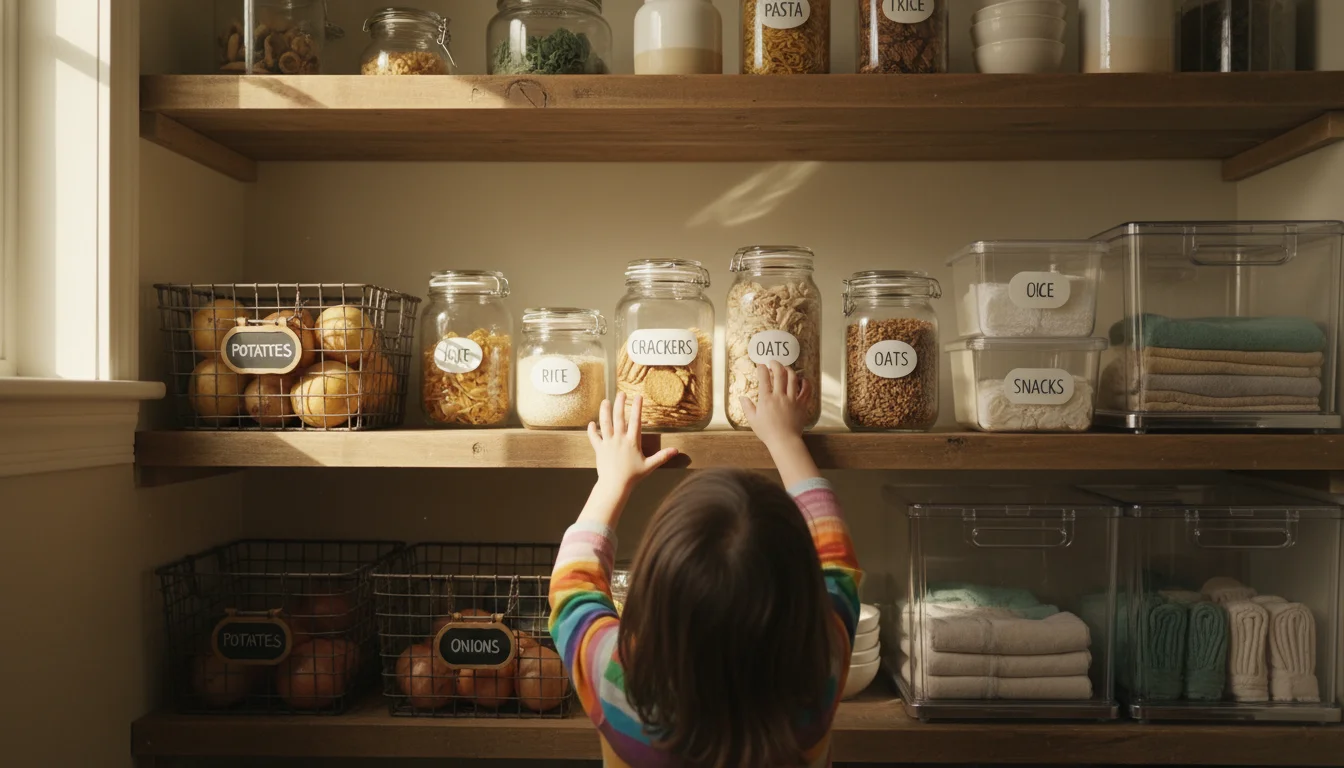
Why Labels are Non-Negotiable
- Instant Identification: Quickly find what you need without opening multiple containers. This saves time and reduces frustration.
- Consistency: Ensures items are always returned to their correct home, preventing clutter from creeping back in.
- Family Participation: Makes it easy for everyone, even children, to help maintain the system. If they know where the crackers go, they can put them away.
- Inventory Management: Especially helpful for items transferred from original packaging, allowing you to easily see quantities and expiration dates.
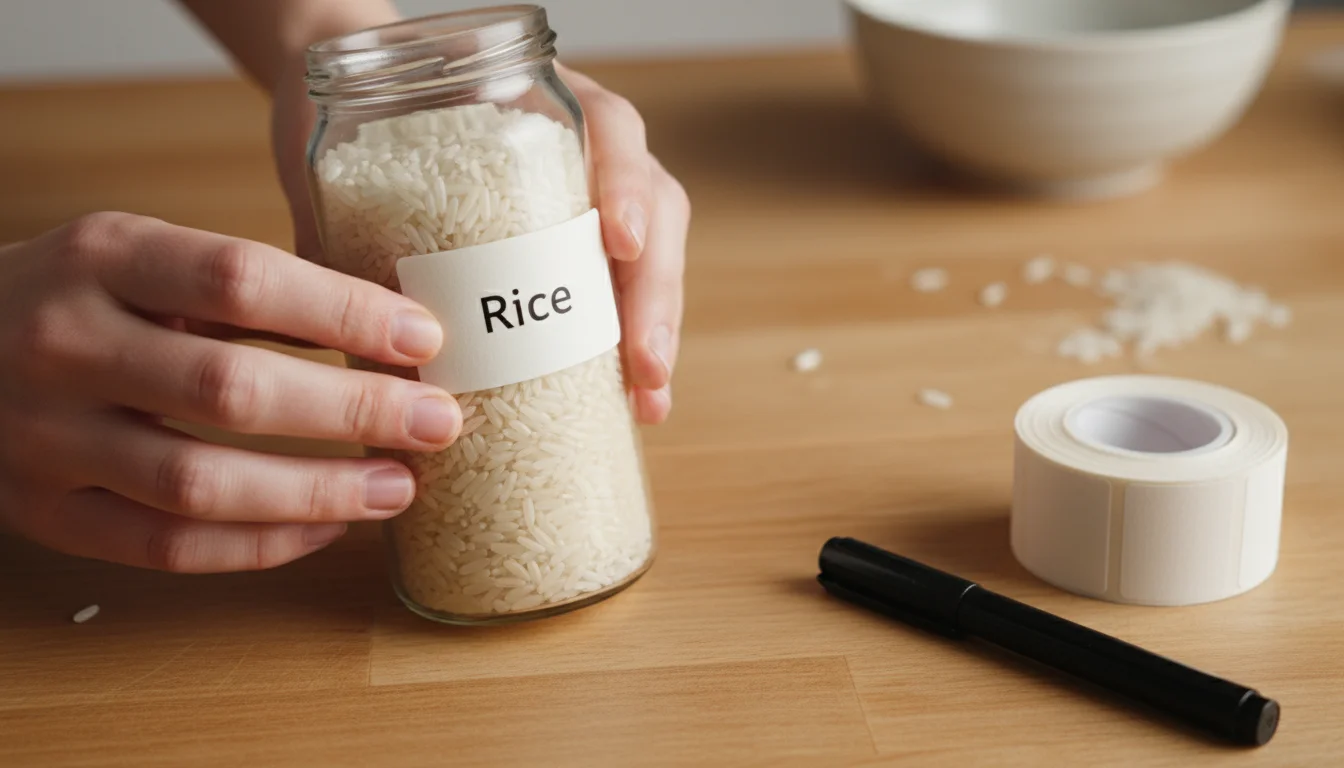
What to Label
- Containers: Label dry goods containers (flour, sugar, rice, pasta, cereal) with the item’s name. You can also add the purchase date or expiration date for perishable items.
- Shelves/Baskets/Bins: Label zones or categories (e.g., “Baking Supplies,” “Snacks,” “Canned Goods,” “Breakfast Items”). This reinforces the zoning you established earlier.
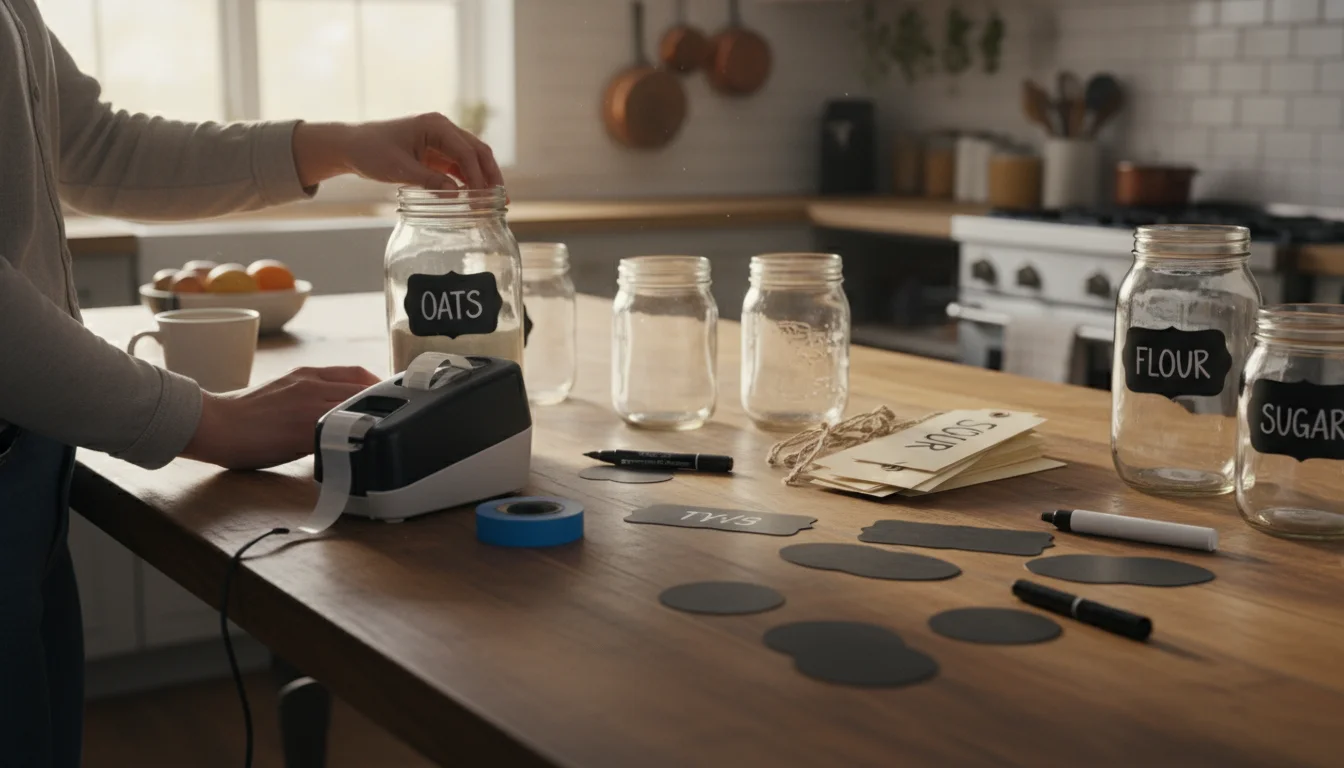
Types of Labels and Application Tips
Choose a labeling method that suits your style and how often you anticipate changes:
- Label Maker: Provides a clean, uniform, and professional look. Labels are durable and come in various sizes and colors.
- Vinyl Decals: Offer a more decorative or custom look. You can create these with a cutting machine or purchase pre-made sets.
- Chalkboard Labels: Use these with a chalk marker on containers or baskets. They are easily erasable, making them perfect for items that change frequently or when you want flexibility.
- Handwritten Labels: Simple and budget-friendly. Use sturdy cardstock and tie them to baskets, or use masking tape and a permanent marker directly on containers. This method offers ultimate flexibility for dynamic inventory.
When labeling, keep it concise and clear. Place labels consistently, ideally on the front of containers or shelves, so they are always visible. This attention to detail transforms a simple storage solution into a truly intelligent storage system.
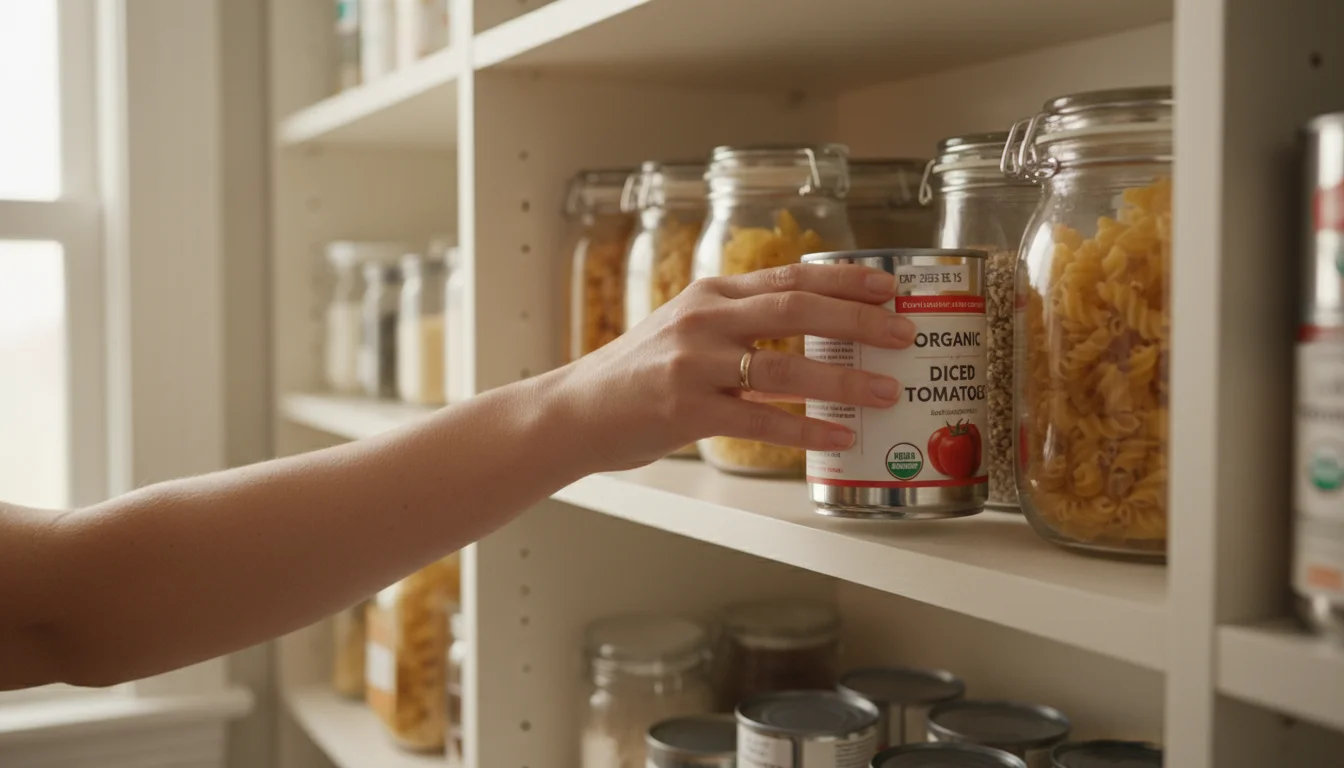
Implementing the FIFO Method for Freshness
Beyond finding items, ensuring food freshness and minimizing waste is a primary goal of effective pantry organization. This is where the FIFO method food storage system becomes invaluable. FIFO stands for “First In, First Out,” a principle widely used in professional kitchens and grocery stores to manage inventory.

What is the FIFO Method?
The FIFO method dictates that the oldest items in your pantry should be used first, before newer purchases. When you bring home new groceries, you place them behind or underneath existing items of the same kind. This ensures a constant rotation, preventing items from lingering in the back of your pantry until they expire.
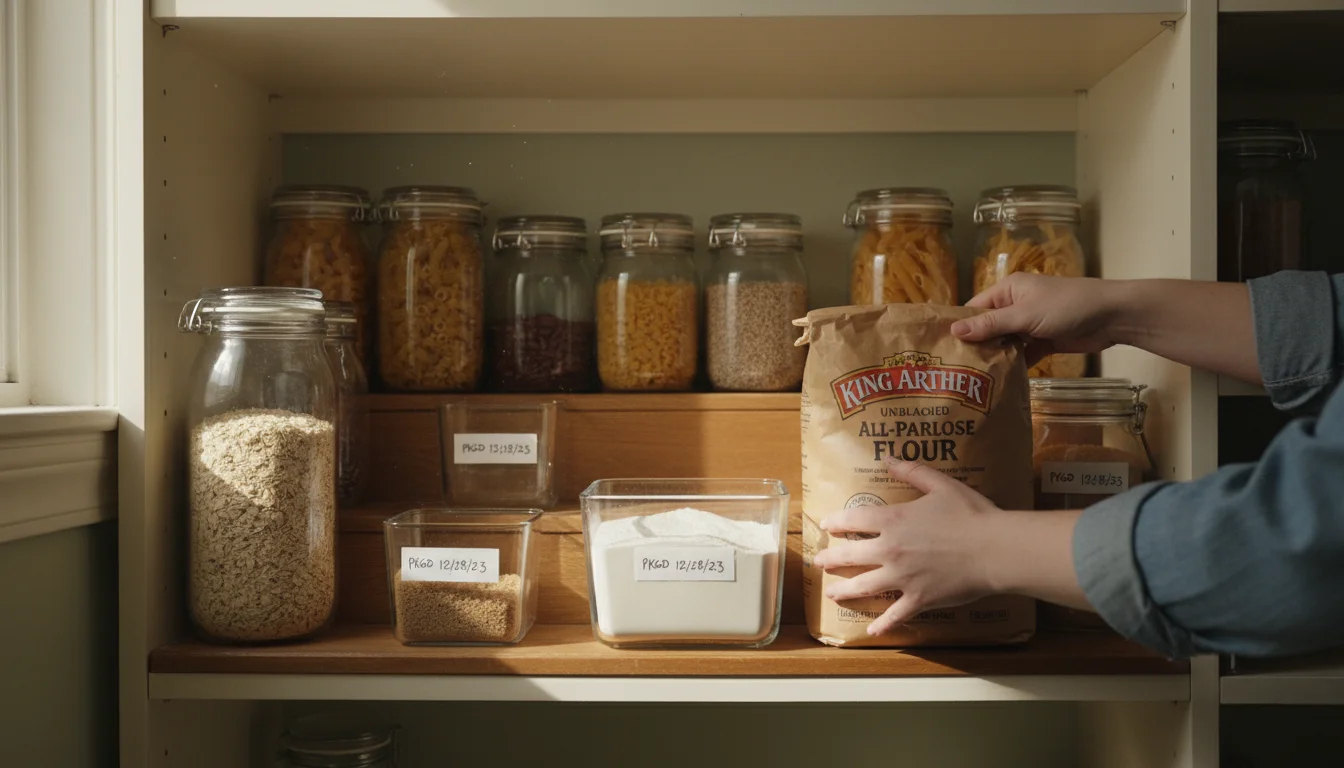
Practical Application of FIFO in Your Pantry:
- When Unloading Groceries:
- Take out any existing items of the same type (e.g., an opened bag of flour, a box of cereal).
- Place the older items at the front of the shelf or container.
- Put the newly purchased items behind the older ones.
- Labeling with Dates: When you transfer bulk goods into clear containers, write the purchase date or the “use by” date from the original packaging directly on the label (using an erasable marker if possible). This provides a quick visual cue for rotation.
- Visibility is Key: Clear containers and tiered risers enhance visibility, making it easier to identify and rotate items. If you can see what is oldest, you are more likely to use it.
- Regular Checks: Incorporate a quick FIFO check into your weekly meal planning or grocery shopping routine. This helps you identify items nearing their expiration date, prompting you to use them in upcoming meals.

Benefits of the FIFO Method:
- Reduced Food Waste: This is the most significant benefit. By consistently using older items first, you drastically cut down on food that spoils or expires.
- Cost Savings: Less food waste directly translates to saving money on your grocery bill.
- Fresher Ingredients: You consistently cook with the freshest available ingredients, improving the quality of your meals.
- Efficient Inventory: You always know what you have and what needs to be used soon, making meal planning and grocery list creation more informed.
Implementing the FIFO method is a simple habit with powerful results, transforming your pantry into a dynamic, waste-reducing machine. It is a cornerstone of smart pantry organization.
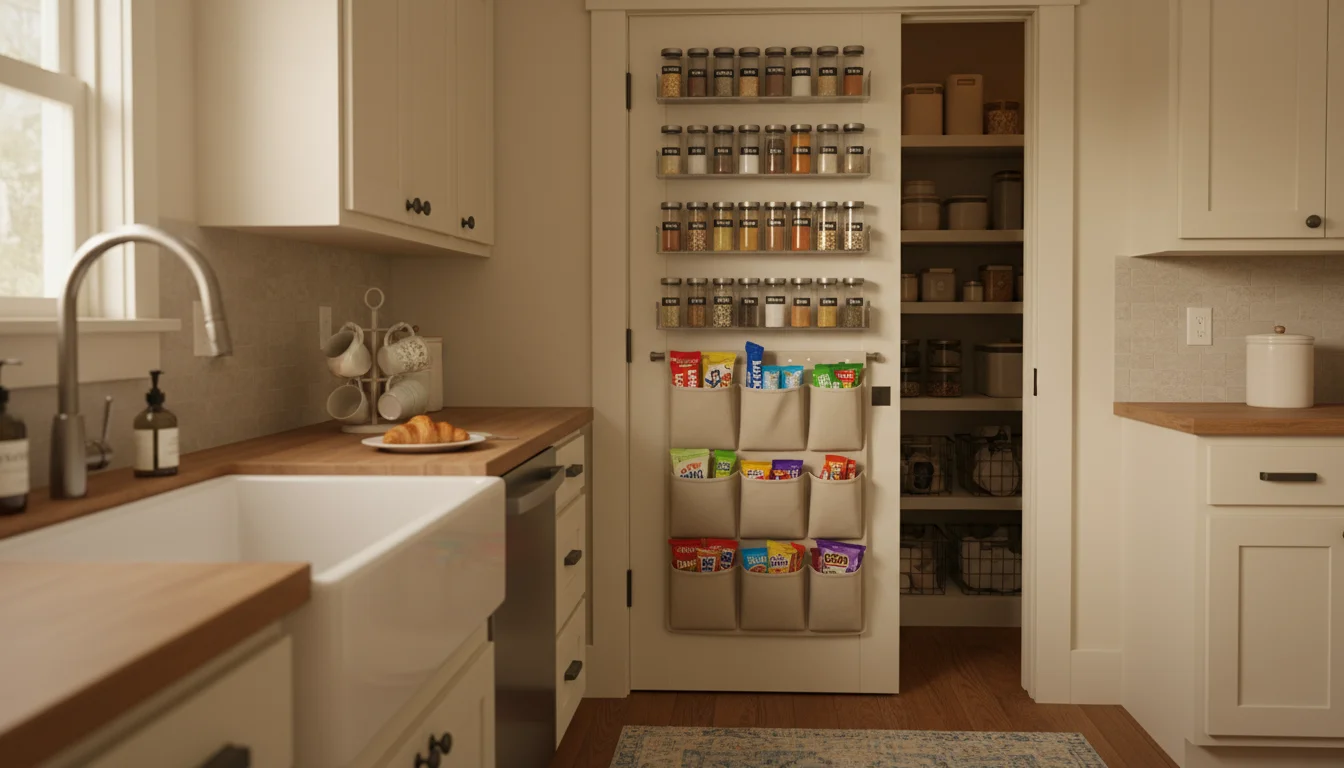
Beyond the Basics: Optimizing Doors and Specialized Storage
A truly optimized pantry leverages every available surface and considers the unique challenges of different item types. Thinking creatively about vertical space, specialized inserts, and even the often-overlooked pantry door can unlock significant storage potential.
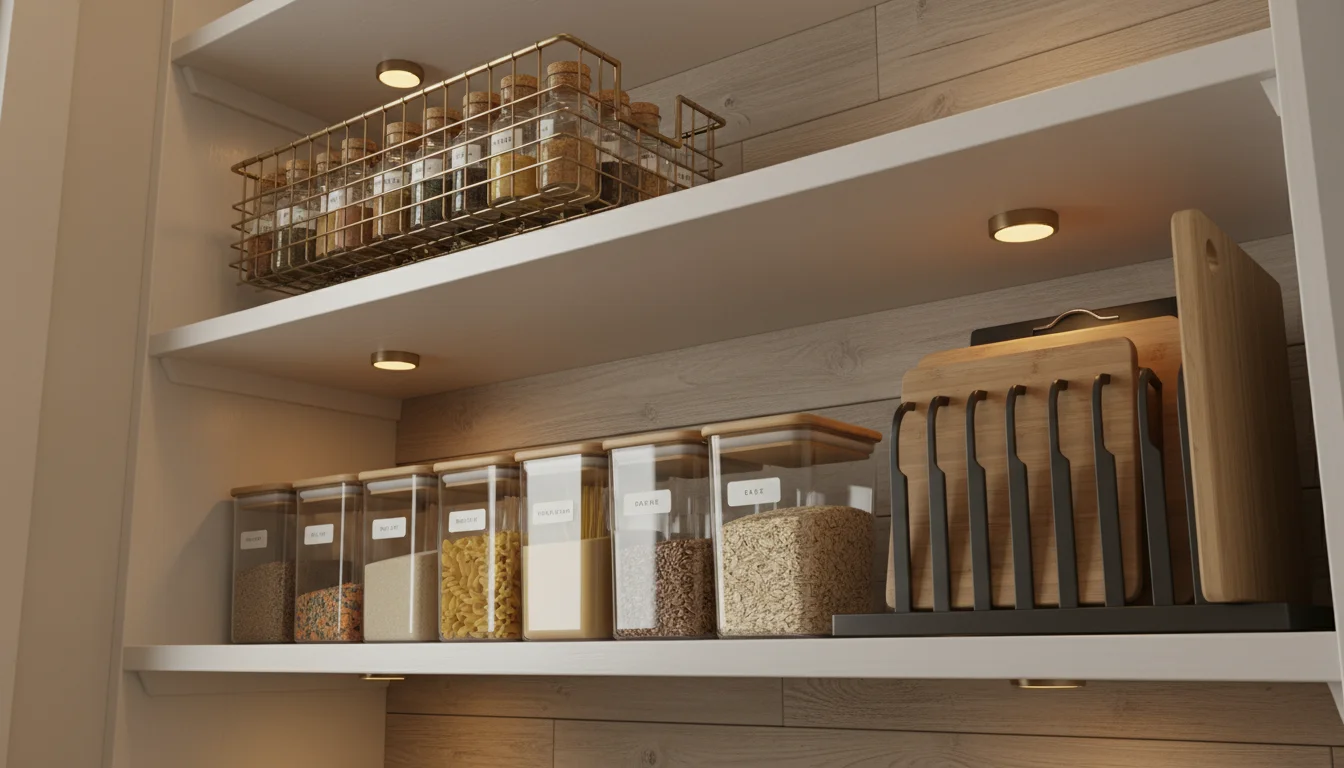
Making the Most of Vertical Space
Many pantries suffer from “shelf gap” where there is ample vertical space between shelves that goes unused. Here is how to maximize it:
- Stackable Bins and Containers: As discussed, choose containers designed to stack securely. This effectively doubles or triples the storage capacity of a single shelf.
- Shelf Dividers: These upright organizers help keep stacks of plates, serving trays, cutting boards, or sheet pans upright and tidy, preventing them from toppling over. They also create distinct sections on wide shelves.
- Under-Shelf Baskets: These clever wire baskets hook onto the underside of a shelf, creating instant additional storage for lightweight items like bread, paper towels, or spices without drilling.
- Adjustable Shelving: If your pantry has adjustable shelves, take advantage of this feature. Reconfigure the shelves to better accommodate your tallest and shortest items, minimizing wasted space.
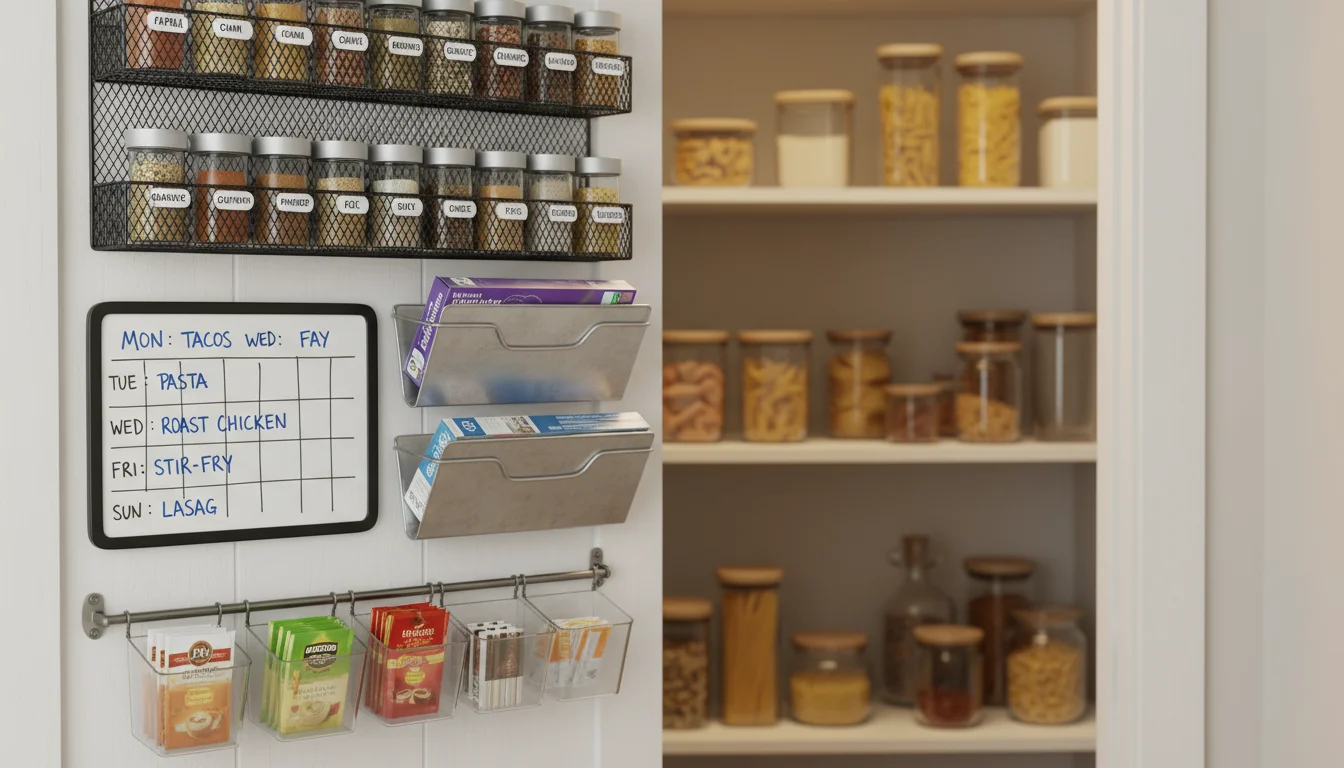
Harnessing the Power of Pantry Doors
The inside of your pantry door is prime real estate often left unused. It is perfect for small, frequently accessed items:
- Spice Racks: Wall-mounted or over-the-door spice racks keep your spices visible and organized, freeing up valuable shelf space.
- Command Centers: Mount a small dry-erase board or cork board for grocery lists, meal plans, or important notes.
- Magazine Holders (Repurposed): Use these for storing foil, plastic wrap, parchment paper boxes, or even small recipe books.
- Small Bins with Hooks: Attach small wire or plastic bins to the door using adhesive hooks for small packets, tea bags, or cleaning cloths.

Specialized Storage Solutions
- Can Organizers: These gravity-fed racks automatically roll the next can forward, reinforcing the FIFO method and making your canned goods aisle look incredibly neat.
- Bottle Organizers: Keep water bottles, travel mugs, or wine bottles from rolling around on shelves.
- Bag Dispensers: For plastic grocery bags or trash bags, a wall-mounted dispenser keeps them contained and easily accessible.
- Produce Bins: For produce that does not require refrigeration (onions, potatoes, garlic), breathable bins or baskets on lower shelves promote air circulation and prevent spoilage.
Integrating these specialized storage systems transforms a standard pantry into a highly efficient and customized space. Remember, even small improvements accumulate into a significant upgrade in functionality.
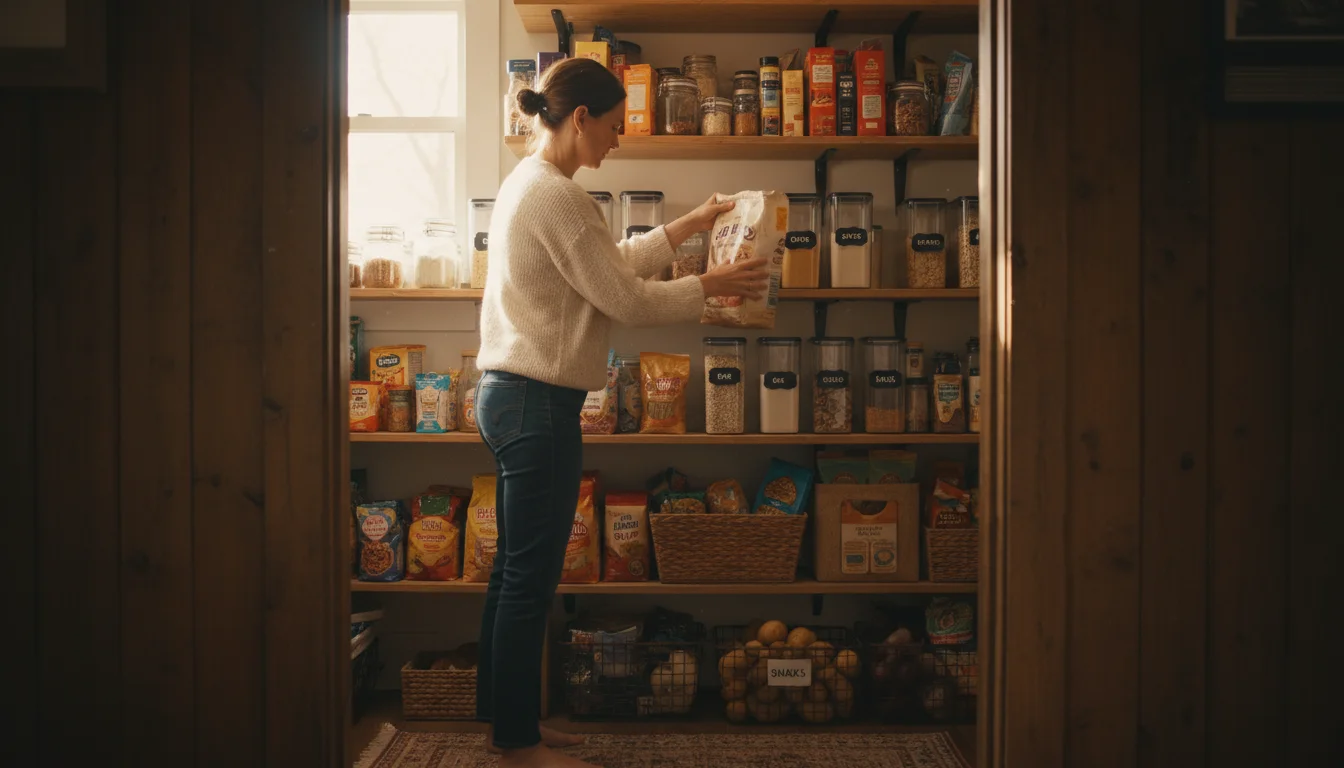
Maintaining Your Organized Pantry: A Lifelong Habit
Creating a beautiful, functional pantry is an achievement. Keeping it that way requires consistent, simple habits. View pantry organization as an ongoing process, not a one-time event. Just like doing laundry or washing dishes, maintenance is part of living in a functional home.
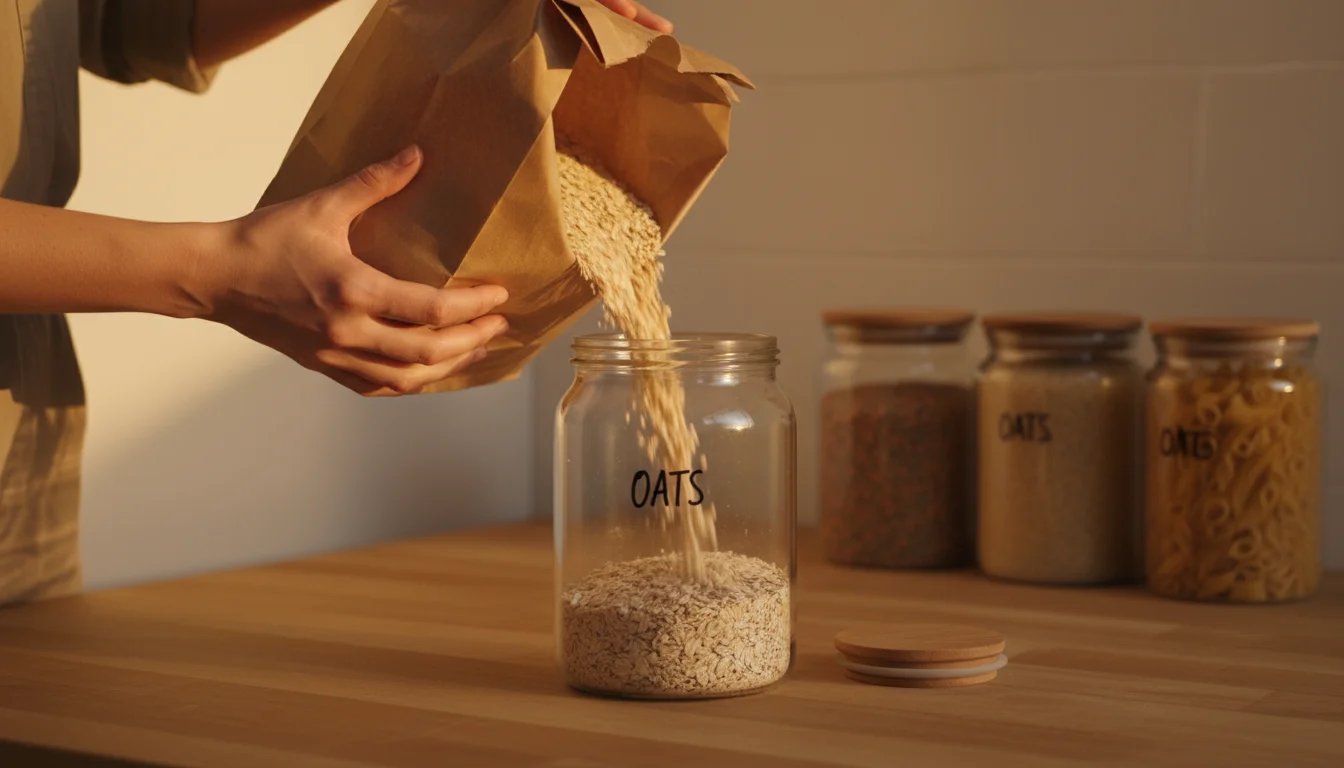
Small Habits, Big Impact:
- The “One-Minute Rule”: When you grab something from the pantry, take one minute to tidy up its immediate area. Straighten containers, wipe a small spill, or push items back into place. This prevents small messes from escalating.
- Shop Your Pantry First: Before heading to the grocery store, check your pantry. Plan meals around ingredients you already have, especially those nearing their expiration date. This reinforces the FIFO method and prevents overbuying.
- Unpack Groceries Mindfully: This is a crucial moment for maintenance. When you put away new groceries, take the extra minute to rotate existing stock (FIFO), transfer dry goods to their designated containers, and discard excess packaging.
- The “Like with Like” Principle: Always put items back in their designated zones. If an item does not have a home, create one or reconsider if you truly need to keep it.
- Weekly Quick Scan: Dedicate 5-10 minutes each week to a quick pantry scan. Straighten items, re-label anything that has fallen off, and identify any immediate issues. This prevents a full-blown reorganization later.
- Monthly Deep Check: Once a month, do a slightly more thorough check. Look for expired items, consolidate open packages, and wipe down any visible spills.
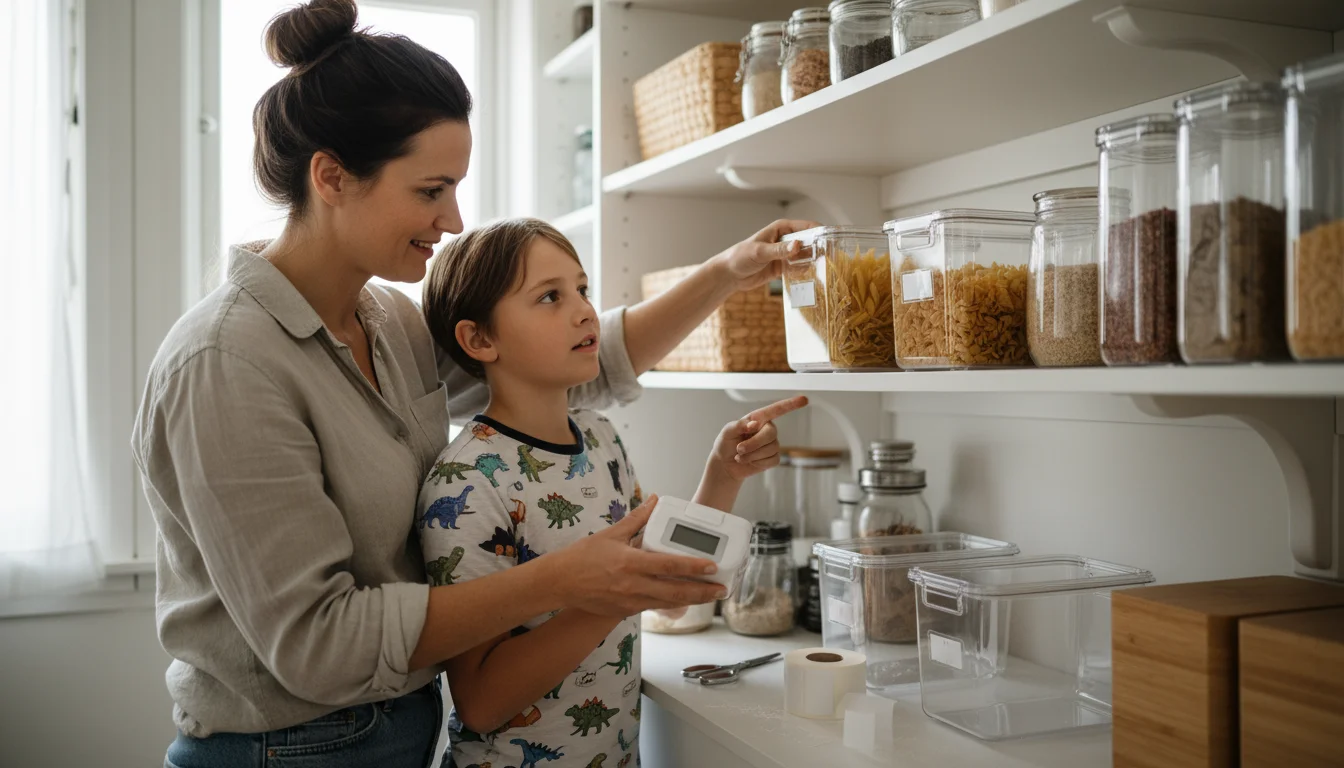
Adjusting Your System
Your pantry system should evolve with your household’s needs. If your family’s eating habits change, or you introduce new dietary preferences, your pantry layout might need an adjustment. Do not be afraid to tweak zones, re-label containers, or invest in new solutions if your current ones are no longer working. A truly lasting system is a flexible one.
Involve your family in the maintenance process. When everyone understands the system and participates in putting things away correctly, your organized pantry becomes a collective success. By integrating these simple habits, you ensure your pantry remains a source of efficiency and calm, supporting your daily life with ease.

Frequently Asked Questions
What are the best containers for pantry organization?
The best containers for pantry organization are typically clear, airtight, stackable, and made from durable, food-safe materials like BPA-free plastic or glass. Clear containers allow you to see contents at a glance, preventing overbuying and facilitating the FIFO method. Airtight seals keep dry goods fresh and pest-free, while stackability maximizes vertical space. A variety of sizes is important to accommodate different items, from small spices to large bags of flour.
How often should I reorganize my pantry?
A full, deep reorganization of your pantry is not necessary more than once or twice a year if you maintain a consistent system. However, integrating small maintenance habits is key. Aim for a quick 5-10 minute tidy-up weekly, perhaps when you unload groceries. A more thorough monthly check for expired items and minor adjustments will keep your system running smoothly and prevent major overhauls.
What if I have a small pantry or no dedicated pantry space?
You can still achieve excellent organization in a small pantry or without a dedicated one. Focus on maximizing vertical space with stackable containers, tiered risers, and under-shelf baskets. Utilize cabinet doors or even a utility cart for additional storage. For no dedicated pantry, designate specific kitchen cabinets or drawers as “pantry zones” and apply the same principles of decluttering, zoning, labeling, and FIFO to these smaller spaces. The principles remain the same, regardless of space size.
How can I make my pantry organization budget-friendly?
Achieving an organized pantry does not require a large budget. Start by using what you already have, like repurposed glass jars or sturdy shoeboxes for bins. Look for affordable clear containers at discount stores or during sales. DIY options, such as using tension rods for vertical dividers or installing simple shelves, can also save money. Prioritize buying quality airtight containers for staples that need to stay fresh, and gradually add other organizational tools as your budget allows.
Why is labeling so important for long-term pantry organization?
Labeling is crucial for long-term pantry organization because it creates clarity and consistency. Labels ensure everyone in the household knows where items belong and what is inside opaque containers. This prevents items from being misplaced or forgotten, making it easy to put groceries away and find ingredients quickly. It reduces friction in daily routines, ultimately sustaining your organized system without constant effort.

Leave a Reply